
Knowledge Hub
The Global Gender Gap Index (GGGI) is an annual report produced by the World Economic Forum (WEF) that measures gender-based gaps in access to resources and opportunities in countries around the world. It is the longest-standing index which tracks progress towards closing these gaps over time since its inception in 2006.
Global gender equality index measurements
The index assesses gender-based gaps in four key areas:
- Economic participation and opportunity
- Educational attainment
- Health and survival
- Political empowerment
Global gender equality ranking
The GGGI also ranks countries on a scale from 0 to 1, with a score of 1 indicating that a country has achieved complete gender equality, while a score of 0 indicates that there is a complete lack of equality. The index is used to raise awareness of gender gaps and to encourage countries to take action to reduce these gaps.
Countries with the worst gender equality ranking
According to the latest Global Gender Gap Index 2024 by the World Economic Forum (WEF), here are the ten countries with the worst gender equality ranking, starting with the lowest ranked:
- Sudan
- Pakistan
- Chad
- Iran (Islamic Republic of)
- Guinea
- Mali
- Democratic Republic of the Congo
- Algeria
- Niger
- Morocco
In 2024, the country offering most gender equal conditions was Iceland with a score of 0.93
These rankings are based on the WEF's analysis of various factors, including economic participation and opportunity, educational attainment, health and survival, and political empowerment. The report highlights the persistent and widespread gender gaps that exist around the world, particularly in these countries where women face significant challenges in terms of access to education, healthcare, and economic opportunities, as well as political representation and empowerment.
Gender equality global statistics
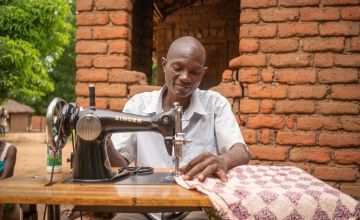
In 2024, the global gender gap closed by 68.5%. At the current rate of progress, it will take 134 years to reach full parity. There was generational loss which occurred between 2020 and 2021: according to trends leading up to 2020, the gender gap was set to close within 100 years.
Based on the Global Gender Gap Report 2024 by the World Economic Forum (WEF), the most recent global gender equality statistics in specific sub-index areas are as follows.
Economic participation and opportunity
Economic participation and opportunity is the second-longest challenge to global gender parity. Based on the sample of 101 countries included in each edition of the index since 2006, the gap that remains to be closed is 39.5%. In 2024, at the current rate of progress this gap will close in 152 years which is a seven-year improvement from 2023.
Political empowerment
The global gender gap in political empowerment stands at 22.5%, meaning that women have 77.5% of the political empowerment that men have. There are many countries that fall very far behind. The countries that have more than 95% of the gap to close include Vanuatu, Kuwait, Sudan, Iran, Lebanon, Oman and Fiji.
Educational attainment
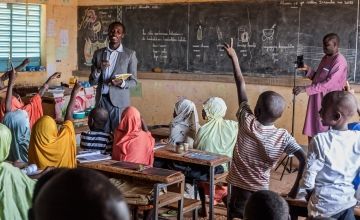
The global gender gap in educational attainment stands at 95.5%, meaning that women have almost achieved parity in terms of educational attainment worldwide. This is a slight drop since 2023 which has been driven by a reduction in scores for literacy rate )from 95% to 91.4%), primary education enrolment (from 99.1% to 98.5%, and tertiary education enrolment (from 96.4% to 96.2%).
However, there is increasing dispersion between countries towards the bottom of the range. Chad, Democratic Republic of the Congo, Guinea, Angola, Mali, Niger and Benin are at the bottom of this sub-index.
Health and survival
The global gender gap in health and survival stands at 96%, meaning women have slightly better health and survival outcomes than men. It shows the most democratic overall performance, with the least amount of dispersion and the smallest reported gender gap.
However, a report by WHO published on 23 February 2023, said that while maternal deaths are mainly preventable with quality healthcare, they have either increased or stagnated in most regions of the world in the past five years. According to the report, on average, a woman dies during pregnancy or childbirth every two minutes. Moreover, low-middle-income countries continue to account for almost all pregnancy-related mortalities.
Azerbaijan falls behind every country on almost every sub-index.
Overall, the report highlights that progress towards gender equality has been slow and uneven across different regions and countries and that there is still a long way to go to achieve gender parity in all areas of life.
Gender equality global goals
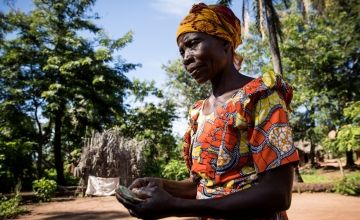
There are several global goals related to gender equality that have been established by the international community, including:
- United Nations Sustainable Development Goal 5: Achieve gender equality and empower all women and girls. This goal includes specific targets such as eliminating all forms of violence against women and girls, ensuring women's full and effective participation in political, economic, and public life, and ensuring universal access to sexual and reproductive health and rights. There is an SDG Gender Index designed specifically to measure progress against this SDG. As it stands, the 2030 deadline to achieve gender equality will not be met.
- United Nations Women's Empowerment Principles: These are a set of seven principles designed to guide businesses in promoting gender equality in the workplace, marketplace, and community.
- The Beijing Declaration and Platform for Action: This is a landmark document adopted in 1995 at the Fourth World Conference on Women in Beijing. This document outlines a comprehensive agenda for gender equality and women's empowerment across 12 critical areas of concern.
- The Convention on the Elimination of All Forms of Discrimination against Women (CEDAW): This is an international treaty adopted in 1979 that requires states to eliminate discrimination against women in all areas of life and ensure their full and equal participation in society.
These global goals provide a framework for action on gender equality, and governments, civil society organisations, and individuals can work together to promote and advance gender equality worldwide.
Trends in global inequality
Several trends in global inequality have been observed in recent years:
Income inequality

Income inequality continues to be a major challenge, with the top 1% of the global population holding over 35% of the world's wealth. In 2022, the World Economic Forum reported that 252 men have more wealth than all 1 billion women and girls in Africa, Latin America and the Caribbean, combined.
Gender inequality
Despite progress in some areas, such as increased access to education and health care, gender inequality remains pervasive. Women continue to face significant barriers in terms of economic participation and decision-making, with a persistent gender pay gap and under-representation in leadership positions. For example, in the health sector, women, despite being 90% of the frontline health workforce, hold just 25% of senior health leadership positions [Relief Web].
Racial and ethnic inequality
Racial and ethnic inequality continues to be a significant challenge, with marginalised groups facing systemic discrimination and limited opportunities for social and economic mobility. In the UK alone, one in three people who belong to an ethnic or religious minority group have been subjected to a racist assault or abuse.
Climate inequality
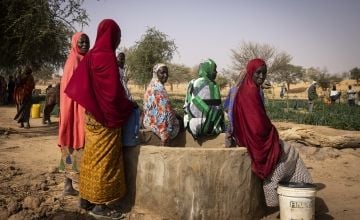
Vulnerable and marginalised communities, particularly in developing countries who often lack the resources to adapt and mitigate the effects of climate change, disproportionately feel the impacts of climate change.
As the United Nations (UN) writes: “The impacts of climate change will not be borne equally or fairly, between rich and poor, women and men, and older and younger generations.” According to a 2020 Oxfam/Stockholm Environment Institute study, between 1990 and 2015, the richest 1% of the global population caused twice as many carbon emissions as the poorest 50%. Critically, many people in that 50% group are part of the most affected people and areas when it comes to global warming.
Digital divide
Access to digital technology and the internet is becoming increasingly important for social and economic participation, but the digital divide remains a major challenge, particularly for marginalized and disadvantaged communities who lack access to technology and digital skills. Not having access to digital technology can mean paying more for essentials, financial exclusion, and an increased risk of experiencing poverty. Numerous essential aspects of everyday life – including, health care, banking, education and identity – depend on access to digital tools and technologies. Connectivity has become a channel to information, education and societal wellbeing. People who are not able to get online and engage with the digital economy face a worsening cycle of exclusion and marginalisation.
2.9 billion people are digitally excluded worldwide (ITU, 2021).
Health inequality
Women and children are at greater risk of malnutrition than men. Twice as many women suffer from malnutrition and girls are more likely to die from malnutrition than boys. Unfortunately, more than one billion women and girls around the world lack access to adequate nutrition and the healthy diets they need to survive and thrive. According to the WHO, eliminating wealth-related inequality in under-five mortality could help save the lives of 1.8 million children in low- and middle-income countries
These trends highlight the urgent need for concerted global efforts to address inequality and promote greater equity and social justice.
Gender equality and poverty
Gender equality and poverty are closely interlinked, with gender inequality often leading to increased poverty rates, particularly for women and girls. Here are some ways in which gender inequality can contribute to poverty:
- Limited access to education: Women and girls often have limited access to education, which can limit their ability to secure well-paying jobs and escape poverty, and increases the likelihood of poorer health outcomes, early marriage, pregnancy and the intergenerational cycle of poverty.
- Discrimination in the workplace: Women often face discrimination in the workplace, such as lower pay for the same work, limited access to promotions, and reduced opportunities for training and skills development.
- Limited decision-making power in the home and at the community level, affecting their ability to prioritise spending, take ownership of theirs and their family’s health and influence community leadership.
- Unpaid care work: Women often shoulder the burden of unpaid care work, such as childcare and housework, which can limit their ability to work outside the home and earn an income.
- Limited access to financial services: Women often have limited access to financial services, such as credit and loans, which can limit their ability to start businesses and earn a living.
- Widespread gender-based violence (GBV) in its various forms, which limits education and livelihood opportunities and affects health and wellbeing.
- Limited political representation: Women are often underrepresented in political leadership, which can limit their ability to advocate for policies that address poverty and gender inequality.
Addressing gender inequality is therefore essential for reducing poverty and promoting sustainable development. By promoting women's access to education, addressing discrimination in the workplace, supporting women's entrepreneurship, and promoting women's political participation, we can help to break the cycle of poverty and create a more just and equitable world for all.
We also need to address harmful, discriminatory and inequitable attitudes towards gender with both men and women at all levels – in the home, at the community level, in the workplace and institutional level.
Concern’s work to address gender inequality
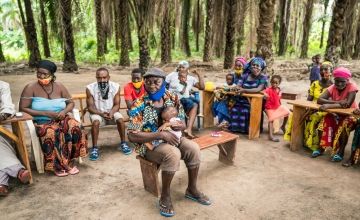
Gender equality forms a major pillar in our fight to end extreme poverty, and is a key area of focus for all programmes in livelihoods, health and education. We design our programmes around a concept of extreme poverty in which gender inequality must be addressed for our work to make a lasting difference. Our programmes are also designed to be gender transformative wherever possible, meaning we directly tackle negative gender norms within every sector. This ensures that we actively promote gender equality within our programmes.
One of many examples is Concern’s AWARE programme in northern Afghanistan, which supports the development of sustainable women-led agriculture businesses. The programme is designed to:
1. Increase access to opportunities, services and assets for Afghan women to sustainably develop and execute their agriculture business ideas and/or expand their existing businesses;
2. Strengthen capacity and confidence of Afghan women to act on business opportunities and influence decision-making;
3. Improve the enabling environment for women’s economic development.
The programme achieves these objectives as well as creating the conditions for women to empower themselves, by working at all levels of identified barriers to women’s empowerment: the individual level, relational level, community level and structural level.
In practice, it looks like this: on an individual level, the programme supports women with agricultural training, assets and financial assistance and the creation of female self-help groups. On a relational level, it engages the husbands and male family members of the female participants through men’s groups, which discuss gender norms, power, violence and healthy relationships, to encourage supportive household dynamics. On a community level, community and religious leaders are engaged to promote positive attitudes and norms and religious leaders are trained on gender equality; and finally, on a structural level, in collaboration with local actors, we work to inform and advise government policy.
Another example is our Umodzi programme in Malawi. Umodzi is a word in Chichewa, Malawi’s national language, meaning ‘united’.
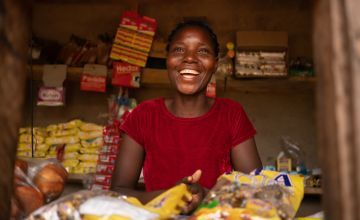
Umodzi brings couples together for monthly sessions where they set a family vision and discuss topics such as gender roles and norms, decision-making, budgeting, violence and healthy relationships. This programme is often combined with our graduation programme, which includes income support, technical and business skills training, coaching and mentoring, support to access basic and financial services (savings and loans) and the provision of a capital/asset transfer.
In our research with Trinity College Dublin, we found that Graduation participants who had also taken part in Umodzi scored highest on an empowerment index measuring household expenditure decisions, children’s investment decisions, fertility and financial decisions, productive agency, aspirations for daughters, political involvement and social capital. Umodzi participants also had the highest livestock value, highest consumption rate, highest mental wellbeing, and enjoyed a more equitable division of domestic and caring tasks and fewer disagreements in the home than non-Umodzi Graduation participants.
Variations of this type of gender transformative dialogue with couples, single sex groups, youth, community and religious leaders and teachers are adopted across around 20 of Concern’s country programmes to address harmful norms at multiple levels, increase women’s decision-making power and promote equitable access to education, livelihoods, and leadership opportunities.
From providing access to clean water, to developing sustainable livelihoods, or ensuring displaced children have access to education, gender is at the core. We have moved on from simply analysing the roles and responsibilities of men and women, to working with communities and institutions to transform gender relations.
When we do our work well, we see whole communities thrive.
Find out more about our gender equality initiatives
Other ways to help
Donate now
Give a one-off, or a monthly, donation today.
Join an event
From mountain trekking to marathon running, join us for one of our many exciting outdoor events!
Buy a gift
With an extensive range of alternative gifts, we have something to suit everybody.
Leave a gift in your will
Leave the world a better place with a life-changing legacy.
Become a corporate supporter
We partner with a range of organisations that share our passion and the results have been fantastic.
Create your own fundraising event
Raise money for Concern by organising your own charity fundraising event.





